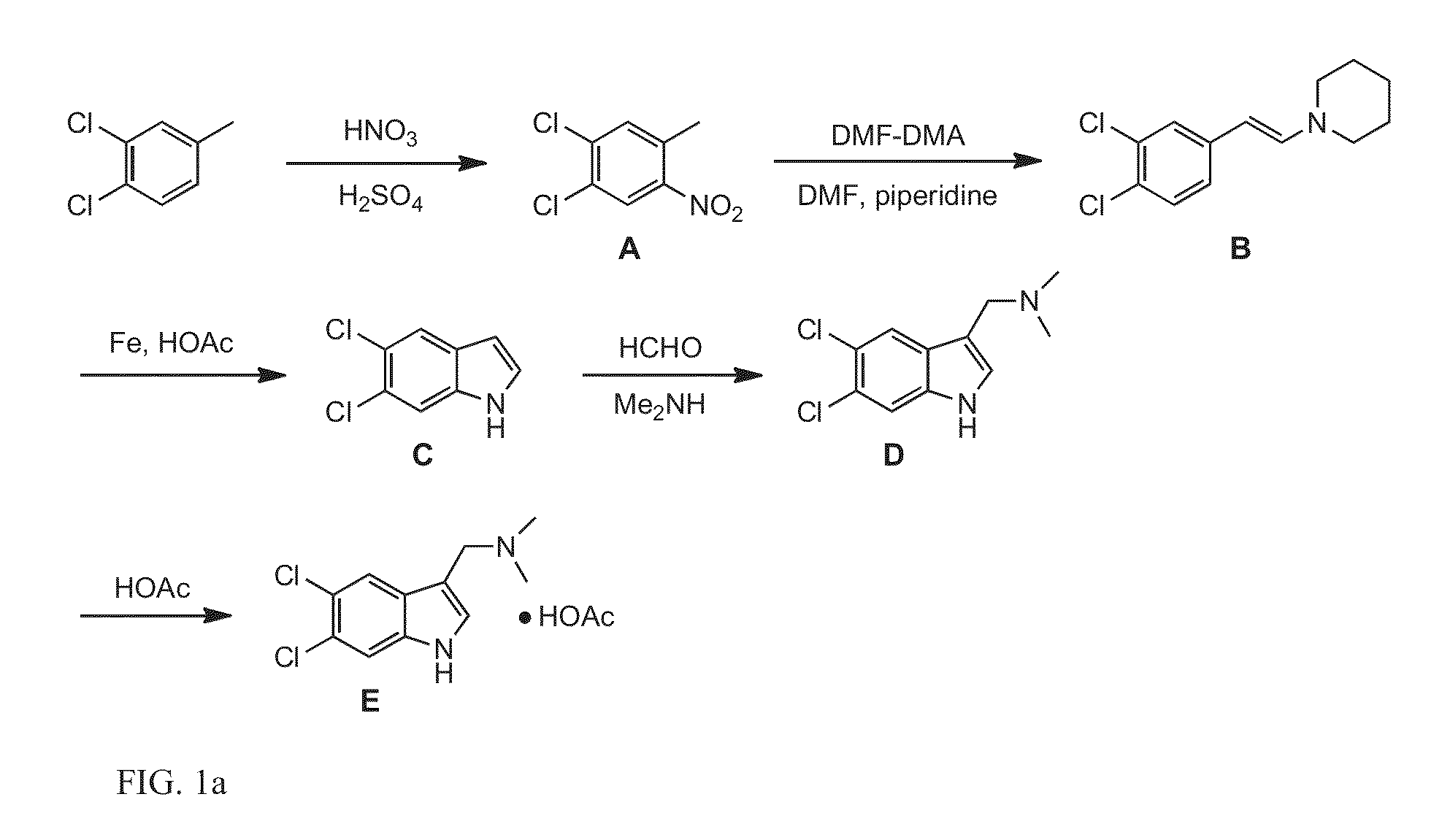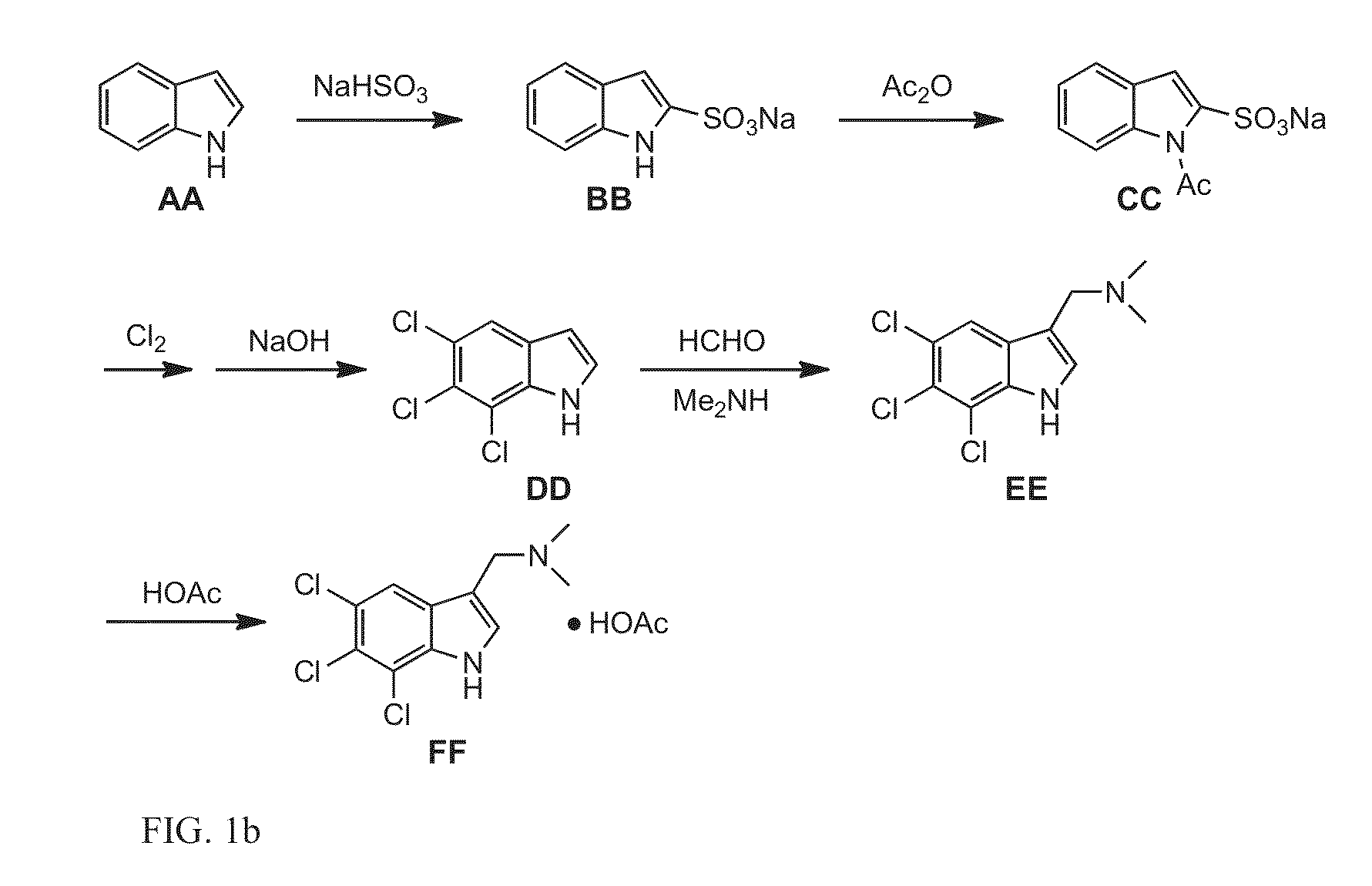Methods of inhibiting cyanobacteria growth by administering gramine derivatives
a technology of cyanobacteria and gramine derivatives, which is applied in the direction of chemistry apparatus and processes, water/sewage treatment using germicide/oligodynamic process, water/sludge/sewage treatment, etc. it can inhibit the growth of toxic bloom algae, and inhibit the growth of cyanobacteria
- Summary
- Abstract
- Description
- Claims
- Application Information
AI Technical Summary
Benefits of technology
Problems solved by technology
Method used
Image
Examples
example 1
Synthesis of 5,6-Dichlorogramine
[0067]205 kg of concentrated sulfuric acid was added slowly to a reactor containing 12.7 L water. After the reactor was cooled to below 30° C., 40 kg of 3,4-dichlorotoluene was added to the sulfuric acid solution and stirred for about 2.5 hours while it was cooled to 5° C. Then 20 kg fuming nitric acid was added while the temperature was kept at 5° C. The mixture was stirred for an additional 30 minutes upon completion of the addition.
[0068]The reaction mixture was slowly added to a reactor containing 500 L of water that has been cooled to below 5° C. A solid precipitate was formed. The mixture was stirred for 30 minutes and then centrifuged. The crude 3,4-dichloro-6-nitrotoluene was washed with water until neutral. Recrystallization in 60% ethanol produced pure product.
[0069]60 kg of 3,4-dichloro-6-nitrotoluene was added to a solution of 600 kg N,N-dimethylformamide dimethyl acetal (DMF-DMA) in 240 kg dimethylformamide (DMF) and 3 kg piperidine in a ...
example 2
Synthesis of 5,6,7-Trichlorogramine
[0073]A solution of 5 g indole in 10 mL ethanol was added to a solution of 8.8 g sodium bisulfite in 30 mL water. The mixture was stirred at room temperature for 12 hrs. The solid precipitate was filtered, washed with ether, and dried to yield sodium indole-2-sulfonate (7.8 g, 91%) as a white solid. The product was used in the next step without further purification. MP>320° C.; IR (KBr, cm−1) 3470, 3250, 1650, 1600, 1490, 1460, 1210, 1170, 1040, 760, 750.
[0074]To a round-bottom-flask containing 60 mL acetic anhydride was added 5 g sodium bisulfite and 5 g sodium indole-2-sulfonate. The mixture was heated and stirred at 70° C. for 1 hr and then at 90° C. for 2 hrs. Upon cooling, the solid was filtered, washed with ether, and dried to yield 5.7 g of sodium 1-acetylindole-2-sulfonate product (93%) as a white solid. The sodium 1-acetylindole-2-sulfonate product was used in the next step without further purification. MP>320° C.; IR (KBr, cm−1) 3480, 301...
PUM
| Property | Measurement | Unit |
|---|---|---|
| concentration | aaaaa | aaaaa |
| concentration | aaaaa | aaaaa |
| concentration | aaaaa | aaaaa |
Abstract
Description
Claims
Application Information
 Login to View More
Login to View More - R&D
- Intellectual Property
- Life Sciences
- Materials
- Tech Scout
- Unparalleled Data Quality
- Higher Quality Content
- 60% Fewer Hallucinations
Browse by: Latest US Patents, China's latest patents, Technical Efficacy Thesaurus, Application Domain, Technology Topic, Popular Technical Reports.
© 2025 PatSnap. All rights reserved.Legal|Privacy policy|Modern Slavery Act Transparency Statement|Sitemap|About US| Contact US: help@patsnap.com



